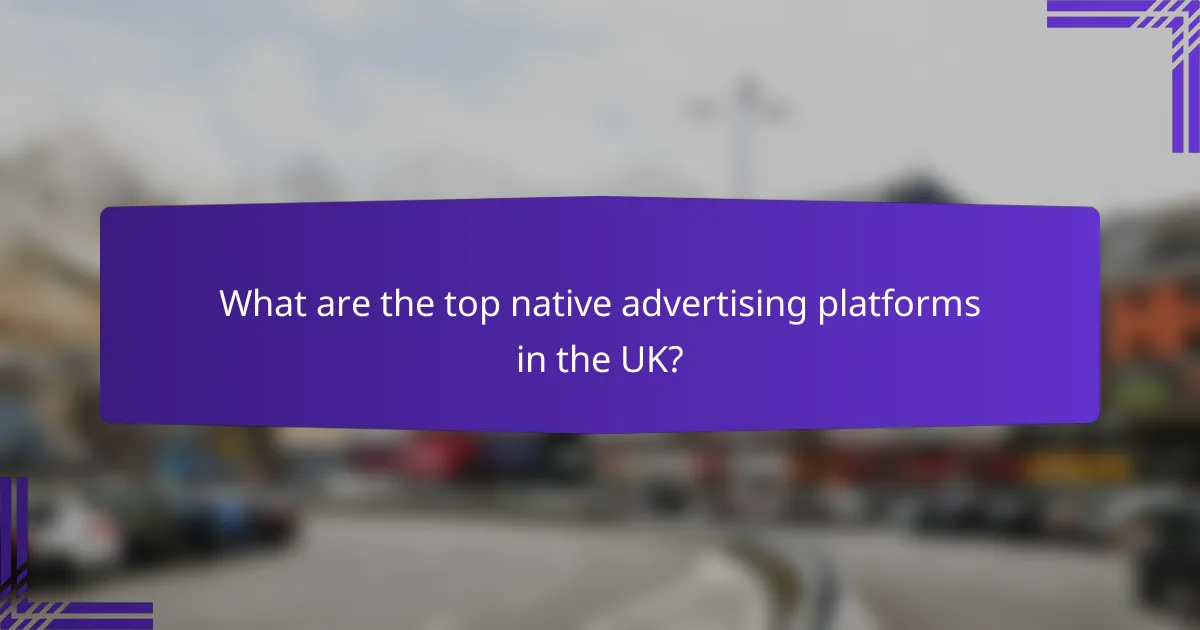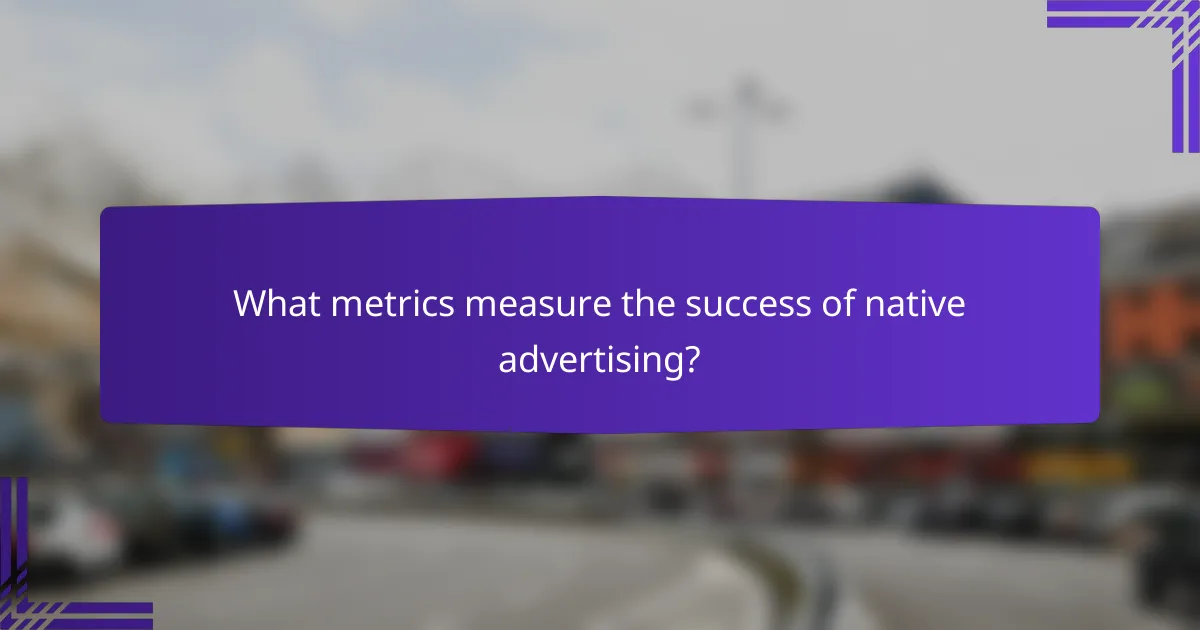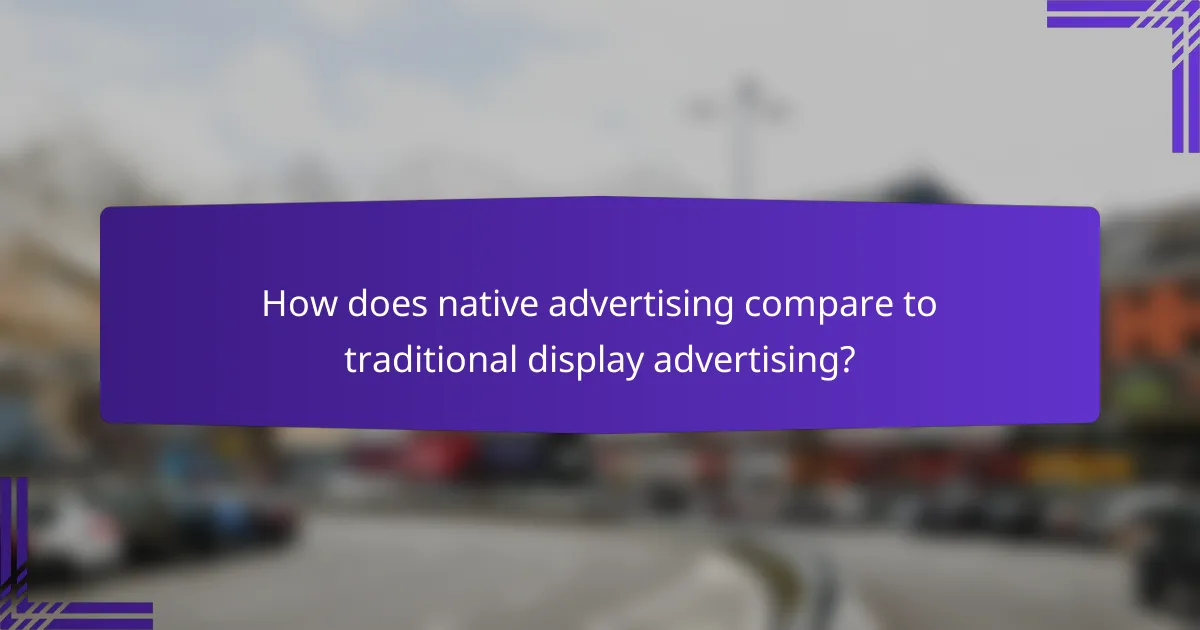Native advertising platforms play a crucial role in enhancing user engagement by integrating promotional content into the overall user experience. By making advertisements less intrusive and more appealing, brands can foster stronger connections with their audiences, ultimately leading to increased interaction and loyalty. Key players in this space, such as Taboola, Outbrain, and Sharethrough, enable seamless content promotion that aligns with user expectations and enhances campaign effectiveness.

How do native advertising platforms enhance engagement in the UK?
Native advertising platforms enhance engagement in the UK by seamlessly integrating promotional content into the user experience, making it more appealing and less intrusive. This approach fosters a connection between brands and audiences, leading to increased interaction and brand loyalty.
Increased audience targeting
Native advertising platforms allow for precise audience targeting based on demographics, interests, and online behavior. By leveraging data analytics, advertisers can reach specific segments of the UK population, ensuring that their content resonates with the right users.
For example, a fashion brand can target young adults in urban areas who frequently engage with lifestyle content. This targeted approach increases the likelihood of engagement and conversion, as the content is tailored to the audience’s preferences.
Improved content relevance
Improved content relevance is a key benefit of native advertising, as it aligns promotional messages with the interests of the audience. By creating ads that blend with editorial content, brands can provide value while promoting their products or services.
In the UK, this could mean crafting articles or videos that address current trends or challenges faced by consumers, making the advertising feel more like a helpful resource than a sales pitch. This relevance enhances user experience and encourages deeper engagement.
Higher click-through rates
Higher click-through rates (CTR) are often observed with native advertising due to its unobtrusive nature and relevance to the audience. Studies suggest that native ads can achieve CTRs significantly higher than traditional display ads, often in the low single-digit percentages.
To maximize CTR, brands should focus on creating compelling headlines and visually appealing formats that capture attention. Additionally, placing ads within content that users are already engaging with can further boost interaction rates, making it a strategic choice for advertisers in the UK market.

What are the top native advertising platforms in the UK?
The leading native advertising platforms in the UK include Taboola, Outbrain, and Sharethrough. These platforms enable brands to promote content seamlessly within the user experience, enhancing engagement and reach.
Taboola
Taboola is a prominent native advertising platform known for its content recommendation engine. It helps brands place their content on high-traffic publisher sites, ensuring visibility among relevant audiences.
Advertisers can set budgets and target specific demographics to optimize their campaigns. Taboola’s algorithm analyzes user behavior to suggest content that aligns with their interests, increasing the likelihood of engagement.
Outbrain
Outbrain operates similarly to Taboola, focusing on content discovery and recommendations. It partners with various publishers to display sponsored content that matches the site’s editorial style, making it less intrusive.
Brands can benefit from Outbrain’s extensive reach and analytics tools, which provide insights into audience engagement and campaign performance. This platform is ideal for driving traffic to articles, videos, and other content types.
Sharethrough
Sharethrough emphasizes quality placements and user experience, allowing brands to integrate their content within the publisher’s site layout. This platform supports various ad formats, including in-feed and in-article ads.
Advertisers can leverage Sharethrough’s technology to optimize ad delivery based on user engagement metrics. This approach helps ensure that ads are relevant and resonate with the target audience, enhancing overall campaign effectiveness.

How to integrate native advertising into existing campaigns?
Integrating native advertising into existing campaigns involves aligning your content with the platform’s style while maintaining brand consistency. This approach enhances user engagement and improves ad performance by blending seamlessly with the surrounding content.
Align with brand messaging
To effectively integrate native advertising, ensure that the content reflects your brand’s voice and values. This alignment helps in building trust with your audience and reinforces brand recognition.
For example, if your brand promotes sustainability, your native ads should focus on eco-friendly practices or products. This consistency not only attracts the right audience but also enhances the overall impact of your advertising efforts.
Utilize data analytics
Leveraging data analytics is crucial for optimizing native advertising campaigns. Analyze user behavior, engagement metrics, and conversion rates to understand what resonates with your audience.
Utilize tools that provide insights into demographics and interests, allowing you to tailor your content more effectively. Regularly reviewing these analytics helps in making informed decisions and adjustments to improve campaign performance.
Test and optimize placements
Testing various placements for your native ads can significantly influence their effectiveness. Experiment with different formats, such as in-feed ads or recommendation widgets, to see which garners the most engagement.
Monitor performance closely and be prepared to optimize based on results. A/B testing can be particularly useful here, allowing you to compare different versions of your ads and refine them for better outcomes.

What metrics measure the success of native advertising?
The success of native advertising is primarily measured through engagement rate, conversion rate, and return on ad spend. These metrics provide insights into how well the ads resonate with the audience and their effectiveness in driving desired actions.
Engagement rate
Engagement rate reflects how actively users interact with native ads, typically measured through clicks, shares, comments, and time spent on content. A higher engagement rate indicates that the content is relevant and appealing to the target audience.
To calculate engagement rate, divide the total interactions by the total impressions and multiply by 100. For example, if an ad receives 500 clicks from 10,000 impressions, the engagement rate would be 5%. Aim for engagement rates in the low to mid-single digits for effective campaigns.
Conversion rate
Conversion rate measures the percentage of users who take a desired action after interacting with a native ad, such as making a purchase or signing up for a newsletter. This metric is crucial for assessing the effectiveness of the ad in driving actual business results.
To calculate conversion rate, divide the number of conversions by the total number of visitors from the ad and multiply by 100. A typical conversion rate for native ads can range from 1% to 5%, depending on the industry and the quality of the ad content.
Return on ad spend
Return on ad spend (ROAS) evaluates the revenue generated for every dollar spent on advertising. This metric helps advertisers understand the financial effectiveness of their native advertising efforts.
To calculate ROAS, divide the total revenue generated from the ad by the total ad spend. For example, if an ad campaign costs $1,000 and generates $5,000 in revenue, the ROAS would be 5:1. A good target for ROAS is typically around 4:1 or higher, indicating a profitable campaign.

What are the challenges of using native advertising?
Native advertising presents several challenges, including the need for high-quality content creation, the risk of ad fatigue among users, and compliance with various regulations. These factors can significantly impact the effectiveness and sustainability of native ad campaigns.
Content creation demands
Creating effective native advertising requires substantial investment in high-quality content that aligns with the platform’s style and audience expectations. This often means hiring skilled writers, designers, or agencies, which can increase costs significantly.
Additionally, the content must be engaging and relevant to maintain user interest. Brands should focus on storytelling and providing value rather than overt selling, which can complicate the creative process.
Ad fatigue among users
Ad fatigue occurs when users become desensitized to native ads due to overexposure, leading to decreased engagement rates. This can happen quickly, especially if the same content is recycled across multiple platforms or campaigns.
To combat ad fatigue, brands should regularly refresh their content and diversify their messaging. Utilizing data analytics to track user engagement can help identify when fatigue sets in, allowing for timely adjustments.
Compliance with regulations
Compliance with advertising regulations is crucial in native advertising, as failure to adhere to guidelines can result in penalties or damage to brand reputation. Different regions have varying rules regarding disclosure and transparency, which must be understood and followed.
For example, in the European Union, the General Data Protection Regulation (GDPR) imposes strict rules on data usage, while the Federal Trade Commission (FTC) in the United States requires clear labeling of sponsored content. Brands should stay updated on relevant regulations to ensure their campaigns remain compliant.

How does native advertising compare to traditional display advertising?
Native advertising integrates seamlessly with content, making it less intrusive than traditional display ads. While display ads often disrupt user experience, native ads align with the surrounding content, enhancing engagement and effectiveness.
Integration of Native Advertising
Native advertising works by blending promotional content with the platform’s regular content, creating a cohesive experience for users. This integration can take various forms, such as sponsored articles, videos, or social media posts that match the style and tone of the platform.
To effectively integrate native ads, brands should focus on creating high-quality content that provides value to the audience. This approach not only improves user experience but also increases the likelihood of engagement and sharing.
Reach of Native Advertising
Native advertising can significantly extend a brand’s reach by leveraging the audience of established platforms. By placing ads within popular websites or social media feeds, brands can tap into existing user bases, often reaching millions of potential customers.
When planning a native advertising campaign, consider the demographics and interests of the target audience on each platform. Tailoring content to resonate with specific groups can enhance reach and effectiveness, leading to better conversion rates.
Engagement with Native Advertising
Engagement levels for native advertising are generally higher than for traditional display ads due to their non-disruptive nature. Users are more likely to interact with content that feels relevant and informative rather than overtly promotional.
To maximize engagement, brands should focus on storytelling and emotional connections in their native ads. Incorporating visuals, interactive elements, and clear calls-to-action can further enhance user interaction and retention.
